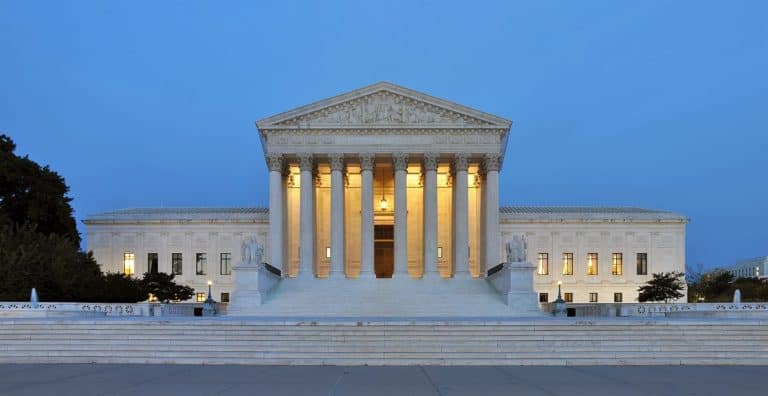Jon Weinberg is a student at Harvard Law School.
The Supreme Court will soon be presented with the opportunity to decide whether unions can constitutionally charge non-members “fair share” fees. According to Bloomberg BNA, “the National Right to Work Legal Defense Foundation intends by the end of May to file a petition asking the high court to review a Seventh Circuit decision dismissing a lawsuit by two Illinois government workers who challenged the fees on First Amendment grounds.” The Supreme Court heard a similar challenge in 2016, Friedrichs v. California Teachers Association, but ultimately ruled 4-4 following the death of Justice Scalia, thus affirming a lower court decision finding that public-sector unions may continue to collect “fair share” fees from nonmembers. The Seventh Circuit similarly upheld such fees in the case at issue now.
Using colorful language about a boss does not deprive a worker of the protections of the National Labor Relations Act, according to the Second Circuit. Consumerist reports that the Second Circuit found that the operator of restaurants at New York’s Chelsea Piers illegally terminated a worker in retaliation for engaging in protected activity when, two days before a unionization vote, the worker posted a colorful Facebook post about his boss in urging support for unionization. The Second Circuit concluded that “the NLRB could reasonably determine that the server’s “outburst was not an idiosyncratic reaction to a manager’s request but part of a tense debate over managerial mistreatment in the period before the representation election.”
America’s male-dominated industries want to diversity. Per the Chicago Tribune, the “Iron Workers union this month leaped to the cutting edge of the effort, becoming the first building trades union to offer up to eight months of paid maternity leave to pregnant women and new moms” despite only 2 percent of union members being women. The union and other traditionally male-dominated employers are driven to recruit women by the aging of baby boomers, a decline in enrollment in vocational education, and other factors.
The doctor is in, and they may want to unionize. A physician writes for KevinMD.com that “before I started my residency program at Boston Medical Center (BMC), I had no idea that residents were unionized at 60 hospitals across the country. I actually didn’t know much about unions or the labor movement until I got involved in contract negotiations between my own union, the Committee of Interns and Residents (CIR), and Boston Medical Center administration. Through this process, I now know what it is like to really be part of a union and I am proud to say I am a union member.”






Daily News & Commentary
Start your day with our roundup of the latest labor developments. See all
July 11
Regional director orders election without Board quorum; 9th Circuit pauses injunction on Executive Order; Driverless car legislation in Massachusetts
July 10
Wisconsin Supreme Court holds UW Health nurses are not covered by Wisconsin’s Labor Peace Act; a district judge denies the request to stay an injunction pending appeal; the NFLPA appeals an arbitration decision.
July 9
the Supreme Court allows Trump to proceed with mass firings; Secretary of Agriculture suggests Medicaid recipients replace deported migrant farmworkers; DHS ends TPS for Nicaragua and Honduras
July 8
In today’s news and commentary, Apple wins at the Fifth Circuit against the NLRB, Florida enacts a noncompete-friendly law, and complications with the No Tax on Tips in the Big Beautiful Bill. Apple won an appeal overturning a National Labor Relations Board (NLRB) decision that the company violated labor law by coercively questioning an employee […]
July 7
LA economy deals with fallout from ICE raids; a new appeal challenges the NCAA antitrust settlement; and the EPA places dissenting employees on leave.
July 6
Municipal workers in Philadelphia continue to strike; Zohran Mamdani collects union endorsements; UFCW grocery workers in California and Colorado reach tentative agreements.